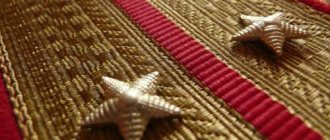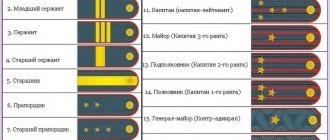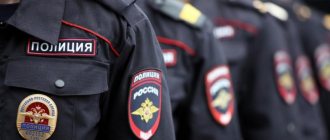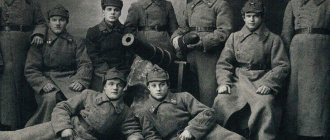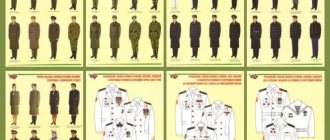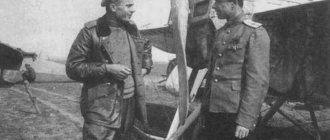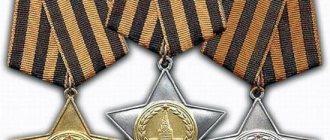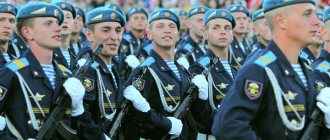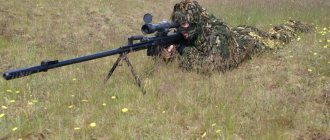Shoulder straps are part of a serviceman's clothing, and the arrangement of stars on the shoulder straps is considered to be a sign of rank distinction between colleagues. However, it is very important to know at what distance the stars should be on this part of the uniform, since punctuality, discipline and strict adherence to instructions play a huge role in the army. A soldier's appearance must always be impeccable.
The placement of stars on shoulder straps according to certain regulations also contributes to clear orientation, that is, another person or colleague will always be able to understand what rank a given serviceman has and what his position is at the present time. In fact, in this regard, shoulder straps provide almost exhaustive information. An important aspect is not only the number of stars, but also their location relative to each other.
How to properly attach stars
Shoulder insignia among military personnel are an integral attribute of a serviceman's appearance in the army, as well as in law enforcement agencies. These signs will not only help to distinguish a particular employee by rank, but also determine which specific department he belongs to.
Rank is distinguished, as a rule, by the size of the stars, their number on the shoulder strap, and also by their location on this part of the serviceman’s clothing. For citizens who decide to give their lives to service, it is necessary to know how to properly attach stars to shoulder straps.
All rules regarding this issue are provided for by special Regulations, which were drawn up and approved by the Ministry of Defense of our country, as well as in accordance with the order of the Ministry of Internal Affairs. All norms must be observed by both future military personnel and those already occupying certain positions.
If the distance between the stars on the shoulder straps differs from the distance prescribed in the relevant acts, then this will be interpreted as a violation of the rules for wearing military clothing.
History of modern military uniforms of the Russian Army
Improving the Russian Army is a constant process. Not only military equipment is being improved, but also the living conditions in which troops are quartered; much attention is paid to the development and implementation of new models of military uniforms, which in many respects and the number of items significantly exceed the kits of NATO troops - the main potential enemy on the battlefield.
The beginning of uniform reform in the army in general, and in the missile forces in particular, began in 2007, when a contract was signed with fashion designer V. Yudashkin to develop samples of uniform sets for the Russian Army. Already at the testing stage, many claims were made against the developed “Yudashkin” form. They boiled down to the fact that the form does not meet the principle of universality. There were numerous complaints that even in the central European part of Russia, soldiers in their new uniforms froze in winter and suffered from heat in summer.
In 2012, after numerous critical remarks addressed to the fashion designer, he actually disowned his brainchild, saying: “I officially declare: what is worn in the army now is not the uniform that I and my employees developed in 2007 by order of the Ministry of Defense "
At present, it is impossible to establish who is the designer and developer of the uniforms worn by soldiers and officers. Over the past 13 years, since the first kits entered service with the troops, some shortcomings have been eliminated, while others have to be put up with.
The main “achievements” of Yudashkin’s team:
- refusal of an overcoat in favor of a pea coat in field uniform;
- refusal of boots in favor of “berts” - high lace-up boots;
- refusal of foot wraps in favor of socks;
- widespread replacement of natural cotton and wool fabrics with synthetic materials;
- introduction of the “office uniform” - a hybrid of civilian suit and field uniform.
In terms of equipment and appearance, military personnel of the Strategic Missile Forces (Strategic Missile Forces) dress in the same way as military personnel of the ground forces; the differences become noticeable only in the field, and also depending on the climatic zone in which the military unit is stationed.
At what distance
In the officer corps, both senior, junior and middle, the distance at which stars are placed on shoulder straps is almost the same. The only difference is the size and location on the shoulder straps.
In accordance with the rank, a serviceman must take into account such features, which are as follows:
- A serviceman with the rank of warrant officer or midshipman wears two stars, which are located along the red line of the shoulder straps. Each star is 1.3 cm, and the distance between them must be at least 2.5 cm.
- A serviceman who has received the rank of senior warrant officer or senior midshipman has one more star, that is, on his shoulder straps the number already reaches three. In this case, they should be located as follows: all three stars are attached on the same line, along the red central one. The distance and size are similar to the previous point.
Find out: What kind of insignia is the maroon beret, what does it give and who wears it
- A serviceman with the rank of junior lieutenant wears one star, which is identical in size to the ensign's stars, but the distance is much greater - 4.5 cm. The star should be located on the red line of the shoulder strap.
- A soldier promoted to the rank of lieutenant has two stars, which are no different in size from the stars of a junior lieutenant. The distance between the stars on the shoulder straps is the same as for ensigns - 2.5 cm. They are located on both sides of the red center line of the shoulder straps.
- A serviceman with the rank of senior lieutenant already receives three stars, which are the same size as on the shoulder straps of a serviceman one step lower. The distance of the stars on the shoulder straps is similar, that is, 1.3 cm. Two stars are located on both sides of the red center line, and the third is slightly higher and is located directly on the red line itself.
- A serviceman at the rank of capital and lieutenant commander already has four stars, which also have the same size and similar distance as the senior lieutenant. The location is as follows: two stars on either side of the red line, just above two stars at the same distance.
- A serviceman with the rank of major or captain 3rd rank has one star, which is larger in diameter than those who have the rank of captain or lieutenant. The size of the star in this case is 2 cm. The distance of the stars on the shoulder straps is 4.5 cm. The star is located between two red parallel lines on the shoulder straps.
- A serviceman with the rank of lieutenant colonel or captain 2nd rank already has two stars of the same size and at the same distance as the major. Both stars are located on the red lines of the shoulder straps.
- A serviceman who has received the rank of colonel or captain 1st rank has three stars on his shoulder straps, which are also 2 cm in size, and the distance between the stars on the shoulder straps of the RF Armed Forces in this case is 4.5 cm. Two stars are located on the red lines of the shoulder straps, and one slightly above and in the middle between these lines. Moreover, strictly at the same distance from the edges of the shoulder element.
- The location of the stars on the shoulder straps of military personnel who have received the rank of major general or rear admiral is indicated on the center line of the shoulder straps. In this case, the distance increases to 5 cm, and the diameter of the star is already 2.2 cm. Military personnel who have received this rank have one star.
- A serviceman with the rank of lieutenant general or vice admiral has two stars located at the same distance as the major general, and their size is also identical. The stars are located on the center line.
- Military personnel with the rank of colonel general already have three stars, which are in one row on the shoulder strap, at the same distance, equal to 5 cm, and having the same diameter, that is, 2.2 cm. All stars are also located on the center line of the shoulder straps.
- A soldier who has received the highest rank in the hierarchy currently established by the government of our country, that is, army general, police general or navy admiral, has one star, which reaches 4 cm in diameter.
Find out: Which troops wear black berets, how soldiers receive them
The placement of stars on officers' shoulder straps is strictly prescribed by regulations, from which one cannot deviate. Moreover, the distance between the stars for each rank in this case is the same and is 2.5 cm.
Rules for placing insignia in the RF Armed Forces from 1994 to 2009
Published by: zampolit, 08/30/2015, 20:31, Symbols of military honor and valor, 7,948, 0
Military ranks in the Armed Forces of the Russian Federation (1994-2010) - insignia of military ranks worn by military personnel from 1994 to 2010. Canceled by Decree of the President of the Russian Federation of March 11, 2010 No. 293.
Those with the rank of “private” do not have any insignia on their field uniforms, with the exception of cadets of non-naval schools, who were allowed to have polyvinyl chloride (metal) letters K in yellow (golden or khaki) color on their shoulder straps. On everyday (ceremonial) The uniform has polyvinyl chloride (metal) letters of yellow (golden) color (except for the shirt): - VS - armed forces - F - navy - K - cadet (army and aviation) - N - Nakhimov Naval School - SVU - Suvorov Military School - VMU - Military Music School - KK - Cadet Corps - MKK - Kronstadt Naval Cadet Corps - VV - Internal Troops
Instead of letters, cadets of naval schools have a golden metal anchor braided with rope on their shoulder straps, like a handwritten (or cursive) letter “g”.
Soldiers and sailors, as well as cadets with the rank of “corporal” and “senior sailor”, have on their shoulder straps, in addition, above the letters (anchor), where there are metal stripes in the form of a narrow single chevron facing the point to the upper cut of the shoulder strap: - on the field uniform - khaki color; - on everyday and dress uniforms - golden color.
On the everyday (ceremonial) uniform of sergeants and foremen there are also polyvinyl chloride (metal) letters (anchors) of yellow (golden) color, similar to soldiers and sailors. During the period under review, sergeants and foremen had insignia in the form of metal stripes in the form of chevrons placed above the letters, of different quantities and widths (depending on the rank), with the tip facing the upper cut of the shoulder strap: - on the field uniform - khaki color; - on everyday and dress uniforms - golden color.
Ensigns and midshipmen have insignia in the form of small stars located on the longitudinal axis of the shoulder strap. The shoulder straps are similar to soldiers' and sergeants', the color of the stars is determined in the same way as the color of the sergeants' stripes, the letters are not worn.
Junior officers have one vertical stripe - clearance. Metal sprockets, small (13mm). There is no clearance on field shoulder straps.
Senior officers have two clearances and large metal sprockets (20 mm). There is no clearance on field shoulder straps.
For senior officers, large embroidered stars (22 mm) are located vertically, there are no gaps. The Marshal of the Russian Federation has one large embroidered star (40 mm) and the coat of arms of Russia (without the heraldic shield).
- 0
How can I attach
Before attaching the stars to the shoulder straps, you need to arm yourself with a ruler, with which it is important to take measurements and mark the places where the stars will be located. It is necessary to measure from the bottom of the shoulder straps up to the center of the first star attachment.
Then you need to mark this place. It is best to use a pen or pencil. After this, use an awl to make a hole in the chase, which will be located at the location of the intended point. After such a procedure, you can insert the star into this hole and bend the lower part so that the star is held as tightly as possible. Fixing the star as tightly as possible is essential to avoid accidental loss.
What is the best way to attach stars to false shoulder straps?
Due to the fact that during combat operations, when the serviceman was required to constantly be on the move and endure physical stress, the problem of attaching stars to shoulder straps faced the military especially seriously.
Several years ago, the government of our country decided that it was pointless to fasten the stars under these conditions, since it was impossible to completely eliminate situations in which they would never come off. For this reason, they decided to use embroidery in the process of making shoulder straps. That is, it was no longer necessary to attach stars to shoulder straps, since the embroidered elements more than compensated for the previous methods of attachment.
When attaching stars and lapel emblems to an officer's uniform, it is necessary to remember the size of the stars themselves. The distance between them is measured from the edge of one to the edge of the other, and not from their center. Therefore, preliminary measurements and marks must be made very carefully, taking into account such nuances. It is best to purchase several spare stars of the required size for a serviceman’s field uniform, since if one or more are lost, they can be easily replaced. Field stars need to be attached more firmly.
Find out: What medals are awarded to military personnel of the Russian Army
How are lapel emblems placed on shoulder straps?
The lapel insignia is another insignia in the army. As a rule, it is placed on the collar of outerwear, but similar distinctive features of a serviceman can also be found on his shoulder straps. Such distinctive signs are also intended to be worn to determine which type of military force a given military member belongs to. As a rule, they are made of gold-plated metal.
The lapel emblems are arranged as follows:
- on detachable shoulder straps they are located directly on the center line of the shoulder straps, generally at a distance of 5 cm from the top button to the top edge of the emblem itself (such symbolism was used on shoulder straps attached to outer clothing, but senior management did not use the emblem in this way);
- lapel emblems could also be placed on the collar of a military jacket, as well as jackets made of wool; the distance between the corner of the collar and the immediate middle part of the emblem, that is, the metal loop for fastening, is 2.5 cm.
Sewing on a lapel emblem is usually a more labor-intensive and difficult process, since it must be sewn through the buttonhole, while the star is attached using a simpler mechanism (legs that need to be pushed apart as much as possible to increase the strength of the attachment).
Moreover, such signs are divided into light and dark. As a rule, dark lapel emblems are used exclusively for field uniforms. This insignia is also important for orientation in the rank of a serviceman and what type of troops he belongs to.
Author's rating
Author of the article
Vitaly Ryabov
I have conscription service behind me, and then contract service. Now retired.
Articles written
241
Shoulder straps in the Armed Forces of the Russian Federation
Shoulder straps, like military ranks, vary. Shoulder straps have a distinguishing number of criteria, such as: the color of the shoulder straps, the order of the distinctive signs on the shoulder straps themselves, the color of the distinctive signs.
Another criterion is the uniform of Russian military personnel. There are three types of uniforms in the army, namely: casual, field and dress.
On the everyday uniform of non-officer Russian military personnel there are shoulder straps with two narrow stripes along the edges of the longitudinal part of the shoulder strap.
On the uniform of officers of Russian military personnel there are three more types of shoulder straps for everyday uniforms:
- Shoulder straps for junior officers of the Russian army: have one stripe located in the center along the shoulder strap itself.
- Senior officers of the Russian army: wear shoulder straps with two longitudinal stripes located in the center of the shoulder strap.
- The shoulder straps of senior officers of the Russian army have a fabric relief along the entire shoulder strap. The edges of the shoulder strap are framed by a narrow stripe. The stars follow strictly in one row.
- The Marshal of the Russian Federation has shoulder straps with fabric relief and they are distinguished by their gold color.
The field uniform of Russian military personnel requires wearing different shoulder straps. Consider these shoulder straps:
- The shoulder straps of non-officers of the Russian army are a regular rectangle, camouflaged in the color of the summer taiga with a longitudinal stripe.
- The field uniform of junior officers of the Russian army requires wearing shoulder straps with relatively small dark green stars.
- Senior officers of the Russian army wear shoulder straps on their field uniforms with large stars.
- The senior officers of the Russian army have identical shoulder straps with stars located strictly in one row.
- The General of the Army and Marshal of the Russian Federation have shoulder straps with large gold stars.
